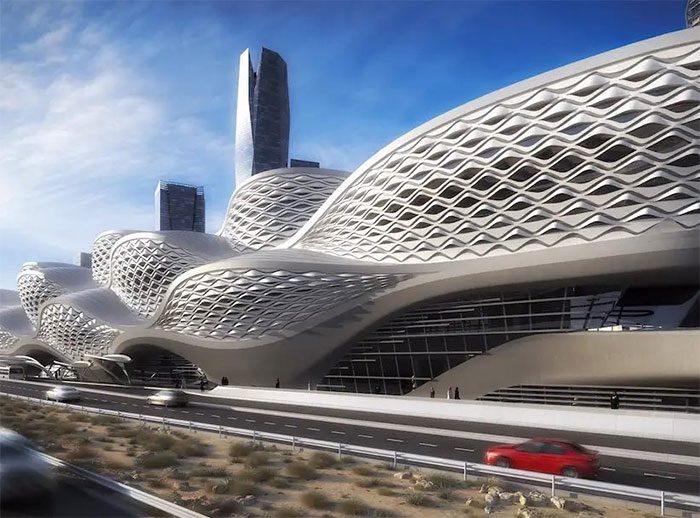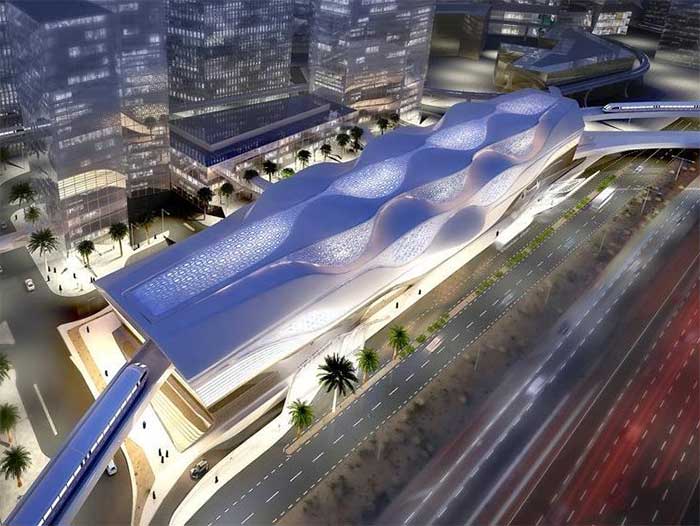This is hailed as one of the largest metro systems in the world and demonstrates the developmental stature of this nation.
Spanning 175 kilometers and traversing a desert city, the Riyadh Metro System worth $22.5 billion is an astonishingly advanced project. However, it is not just a large-scale endeavor but also represents Saudi Arabia as a progressive and modern country, according to The Wall Street Journal (WSJ).
Over the past decade, the country has invested billions of dollars from its oil revenues into constructing magnificent structures designed to endure over time.
Accordingly, Saudi Arabia is reportedly preparing to host two major global events—both of which could generate revenue and boost tourism in the country. Therefore, completing this metro project has turned into a race against time.

The metro will be automated and will not require drivers. (Illustrative image)
According to WSJ, the Riyadh metro network comprises 6 lines, 85 transfer stations, and 175 kilometers of tracks spanning across a city built on sand. The trains will be automated and will not require drivers.
Initially, it was slated to launch in 2019 after 5 years of construction. Currently, the project is also expected to be completed soon this year.
It is known that most of the contracts for the Riyadh Metro were signed in 2013. Architectural, engineering, and construction firms worldwide competed to be part of this $22.5 billion project. Among the selected firms are several prestigious companies such as Zaha Hadid Architects. Zaha Hadid noted that they designed the project in the style of “the space age.”
Ultimately, more than 30 international and local companies, along with various suppliers and subcontractors, were selected for the project.
A few years ago, images of the central station, resembling a 5-star hotel, were revealed as part of the metro system.
The main facade of the station is designed to maximize light while still blocking the searing desert sun. Inside, the interiors are luxurious, featuring marble-floored walkways.
Riyadh is a city with great ambitions. Since the 1970s, the city has utilized the profits from the country’s oil to expand its infrastructure. Riyadh has undergone significant transformations since then. Like the rest of the Gulf region, the city maintains a strong car culture, partly due to the extreme heat that makes walking uncomfortable.

Building such a massive metro system presents many challenges. (Illustrative image).
However, if you look further into the future, heavily car-dependent cities are not truly leading the way in innovation. Now, an automated, electric public transportation system is a suitable investment for the future.
Crown Prince Mohammed bin Salman aims to transform the capital, Riyadh, into an international business hub, with plans to double the population by 2030. If the country wishes to have a chance at fostering growth and establishing its image on the international stage, hosting a major global event is a solid start.
It is reported that Saudi Arabia has won the right to host the World Expo 2030—expected to welcome tens of millions of tourists from over 100 countries. The country is also a leading candidate to host the 2034 World Cup.
However, building such a massive metro system also presents numerous challenges. The materials must withstand fluctuating temperatures. On the Riyadh metro system, the train cars will also need to be specially designed to endure extreme heat and sand.
Three giant tunneling machines have been used to drill and excavate 40% of the route running beneath the city, needing to “weave around” existing building foundations and utilities. Additionally, there are regulations prohibiting workers from laboring during certain hours when temperatures reach dangerously high levels.


















































